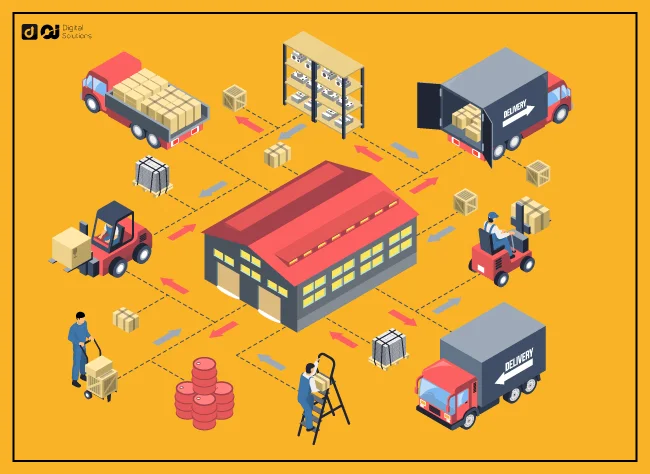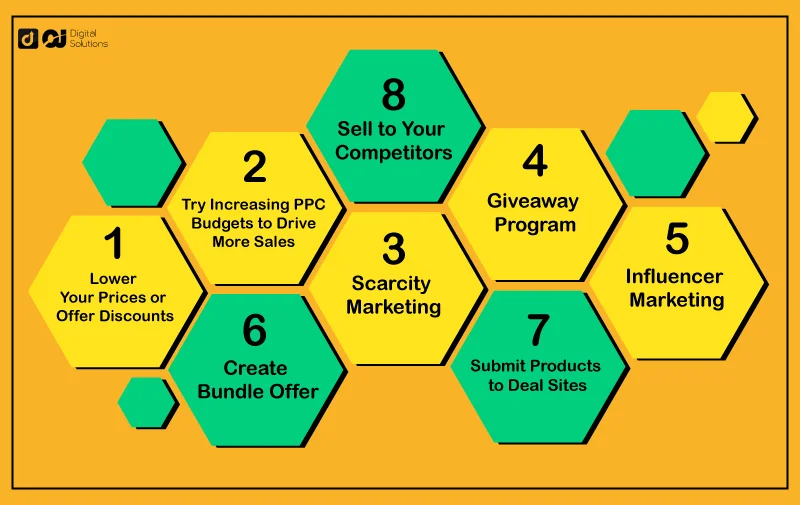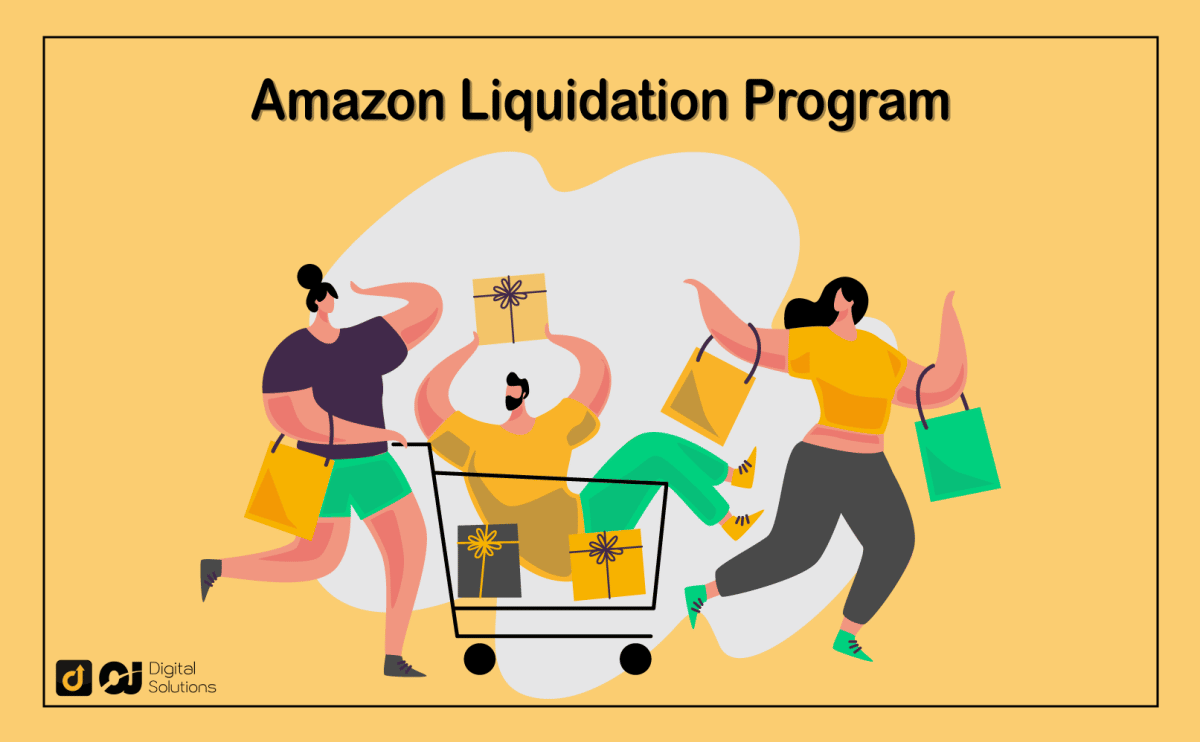As an Amazon seller, you know that clearing unsold stock is common. The reality is that some of your items simply won’t sell, and you have to get rid of them somehow.
The Amazon Liquidation Program can help you in these situations.
The question is: What is the Amazon Liquidation Program, and how does it work?
You’ve come to the right place for answers.
I wrote this guide to discuss all you need to know about the Amazon Liquidation Program, how it works, its benefits, its costs, and more.
Let’s begin.
What Is the Amazon Liquidation Program?
The Amazon Liquidation Program helps Amazon sellers offset excess inventory.
Amazon categorizes different products, packs them into valuable bundles, and sells them at discounted prices.
The idea is to reduce extra inventory and sell it at discounted prices within a limited time. However, the prices are not negotiable since Amazon takes care of your excess stock.
Once Amazon packs the quantities, sellers won’t be able to customize them.
You can’t refund, return, or exchange all liquidation purchases. You can access liquidation orders through your invoices, orders, and order history fulfilled by Amazon Warehouse package deals.
What Is FBA Liquidation?
Amazon FBA liquidation is a process that helps sellers prevent losses from dead stock. However, you must pay storage fees for inventory, which covers only a limited time.
If the stock stays longer in the warehouse, you must pay extra. The same applies to returned products.
Sellers can sign up for the FBA Liquidations Program to avoid paying hefty fines on excess inventory. With this program, Amazon will take over and enlist wholesale liquidators to resell the products at lower prices.
However, you’re limited to liquidation companies partnered with Amazon.
This program lets you recover a portion of your inventory cost while avoiding monthly costs and long-term storage fees. You can also use the extra money to cover your bills and the storage space for fast-selling products.
The amount you recover will reflect on your seller account 60 to 90 days after the liquidation.
How Do Amazon FBA Liquidations Work?

For Amazon to determine the net recovery value of your excess inventory, they will calculate the average selling price. Here are some factors that Amazon evaluates:
- The average FBA selling price of the ASIN on the Amazon marketplace
- The overall sales history of your Amazon business
- The average sale history of liquidated individual ASINs
For a lower price, the liquidators can buy your excess inventory based on the set rates. Amazon will then deduct additional charges before the seller receives the net recovery value of the liquidated merchandise.
There are some exceptions to the Amazon Liquidation Program:
- Once potential liquidators have found your inventory, they will sell the stock via other eCommerce platforms or stores. However, they cannot sell that inventory on the Amazon marketplace.
- Amazon cannot liquidate dangerous goods. Products that are expired, defective, or categorized as Warehouse Damaged are not eligible for liquidation.
How Much Do Liquidators Pay for Inventory?
After placing your liquidation order, Amazon finds a liquidator for the selected inventory. The liquidator will acquire your stock at 5 to 10% of the average selling price.
From there, Amazon calculates a gross recovery value for your merchandise and pays you after 60 days.
How Much Does FBA Liquidation Cost?
Amazon has charged their FBA customers liquidation fees since June 2021.
Sellers pay for these charges once their inventory leaves the Amazon warehouse for delivery to various liquidators.
Amazon charges sellers liquidation processing and referral fees per item and category, according to the item’s size and weight.
Here are Amazon’s processing fees.
Standard-size items
- $0.25 for each item up to 0.5 lbs
- $0.30 for each item between 0.5 and 1 lb
- $0.35 for each item between 1 and 2 lbs
- $0.40 for each item over 2 lbs plus $0.20 for each lb over the first 2 lbs
Oversized items and items that need special handling
These may include shoes, fragile goods, jewelry, apparel, and watches.
- $0.60 for each item up to 1 lb
- $0.70 for each item between 1 and 2 lbs
- $0.90 for each item between 2 and 4 lbs
- $1.45 for each item between 4 and 10 lbs
- $1.90 for each item over 10 lbs plus $0.20 for each lb over the first 10 lbs
Amazon charges fees as percentages per category.
Check out the outlined prices in the table below.
| Category | Referral fee percentage |
|---|---|
| Amazon device accessories | 45% |
| Amazon Explore | 30% |
| Baby products, excluding baby apparel | 8% for inventory products with a total sales price of $10 or less15 % for products with a total sales price greater than $10 |
| Books | 15% |
| Cameras and photo equipment | 8% |
| Cell phone devices | 8% |
| Customer electronics | 8% |
| Electronic accessories | 15% for the portion of the total sales price up to $100 plus 8% for any portion of the sales price greater than $100 |
| Furniture (including outdoor furniture) | 15% for the portion of the total sales price up to $200 plus 10% for the total sales price portion greater than $200 Note: Amazon will charge 15% on mattresses regardless of price point |
| Home and garden (including pet supplies) | 15% |
| Kitchen | 15% |
| Major appliances | 15% for the portion of the total sales price up to $300 plus 8% for any portion of the total sales price greater than $300 |
| Music | 15% |
| Music instruments | 15% |
| Office products | 15% |
| Outdoors | 15% |
| Personal Computers | 6% |
| Software and computer/video games | 15% |
| Sports (excluding sports collectibles) | 15% |
| Tools and home equipment | 15%, but 12% for base equipment power tools |
| Toys and games | 15% |
| Unlocked cell phones | 8% |
| Video and DVD | 15% |
| Video game consoles | 8% |
| Everything else | 15% |
| Categories requiring approval | Referral fee percentages |
| 3D printed products | 12% |
| Automotive and power sports | 12%, except for tires and wheel products |
| Beauty | 8% for products with a total sales price of $10 or less 15% for items with a total sales price greater than $10 |
| Clothing and accessories (including activewear) | 17% |
| Collectible books | 15% |
| Gift cards | 20% |
| Grocery and gourmet food | 8% for products with a total sales price of $15 or less15% for products with a total sales price greater than $15 |
| Health and personal care (including personal care appliances) | 8% for products with a total sales price of $10 or less15% for items with a total sales price greater than $10 |
| Industrial and scientific (including food service and janitorial and sanitation) | 12% |
| Jewelry | 20% for items with a total sales price less than $250 and 5% for items with a total sales price greater than $250 |
Note: You can also check the FBA Liquidations page on Amazon Seller Central.
How To Liquidate Amazon Inventory
Here’s how to liquidate your Amazon excess inventory by creating a removal order.
- Log in to your Seller Central account and go to the Inventory page or the Recommended Removal report.
- Go to the Inventory Planning page and select single or multiple ASINs.
- Click Action on your selected items.
- Choose Create Removal Order in the drop-down menu.
- Click Begin Removal Process on the Recommended Removal report.
Note: If you don’t see this option is not present, you don’t have inventory that Amazon thinks you should remove.
- Select Liquidations under Removal Method.
- Enter the amount of unfulfillable or fulfillable quantities you wish to liquidate.
- Review the liquidation order; you will see a prompt to confirm it.
Here’s how to create a bulk liquidation order:
- Get a template from the Upload Removal Order File page.
- Submit your request.
- Under the value for Removal Disposition, select Liquidate.
Note: You can’t cancel a liquidation order. However, you can use the stock and sell it to your buyers during the pending liquidation order period.
After a successful order, this inventory will automatically stop accruing storage fees.
8 Ways To Liquidate Your Amazon Inventory

Here are other ways to liquidate excess inventory.
Lower Your Prices or Offer Discounts.
Determine the minimum prices you can set for your items without losing money.
Start by matching fees with your competitors or undercut them slightly.
Customers love discounts, making it an effective way to dispose of excess inventory. Remember, while discounts can help drive sales faster, they shouldn’t be your first option.
Increase Your Advertising Budget To Increase Sales.
The pay-per-click (PPC) Amazon auction system can help you liquidate inventory by increasing sales and traffic to your products.
As you continue to drive more sales with PPC, focus on acquiring product reviews to rank higher and gain the trust of more Amazon customers.
Use the Scarcity Marketing Strategy.
Scarcity marketing is an old trick many marketers still use.
Tell your target audience a product will no longer be available once it sells out. Doing so gives shoppers a good reason to buy your product sooner rather than later, making liquidating inventory much easier.
Launch a Giveaway Program.
Everyone likes free products.
Giveaways are helpful for Amazon sellers when launching new products, but they also work well for clearing your dead inventory.
Giveaways may lead customers to shop for more items and stay loyal to your brand. As a result, your new inventory might get recognized faster.
Take Advantage of Influencer Marketing.
You can find influencers on Facebook, Instagram, TikTok, and other social media platforms.
Famous brands like Pepsi, Nike, and Adidas use influencers to promote their products.
You can set aside a small budget and reach out to local influencers within your niche.
Influencers leverage their audience to advertise sponsored products.
They make their money selling the products, and you clear your inventory. Furthermore, their huge following helps build your brand exposure.
Offer Attractive Bundles.
Bundles are well-known for pairing up similar items. For example, you can create a bundle of shaving cream, razors, and aftershave products.
Look for high-selling products and pair them with your excess inventory. Your customers won’t know you are liquidating unwanted inventory.
Submit Products to Deal Sites.
Visit other sites to have your excess inventory liquidated.
Check out other marketplaces like eBay, Shopify, and Walmart. Facebook Marketplace and Instagram Shopping are good places to market your excess stock.
You must submit a removal order from your Amazon Seller account to leverage other sites. For example, a removal order allows Amazon to transfer your items from their warehouse to a different location.
However, Amazon will charge you the following additional fees:
- Return fees are $0.50 per standard item and $0.60 per item for oversized items.
- Disposal fees are $0.15 for every standard item and $0.30 for every oversized item.
Sell To Your Competitors.
Selling your Amazon inventory to your competitors may sound counterintuitive, but you can profit from it instead of liquidating your inventory at low prices.
Your competitors will buy your inventory cheaply to take you off the market. With your products’ unique features and brand value, you can sell them to a worthy competitor.
Look for a seller that offers the same products as yours. Then, negotiate for good prices.
Apply business logic and sell your inventory close to the original cost price. You’ll avoid massive losses and solve your inventory issues in one move.
When Do You Need To Liquidate Your Amazon Inventory?
Here are instances when liquidating excess Amazon inventory is necessary.
You Have Items That No Longer Sell.
Amazon inventory that doesn’t sell piles up over time while accruing storage fees. Dead inventory can result from low demand, poor product quality, or high shipping fees.
Sellers order large inventory quantities when there’s an increase in product demand, occasionally leading to excess inventory after the demand goes down.
For example, you might buy Christmas decorations to sell in the lead-up to the Holiday season. However, these products become excess inventory items once the season ends.
You Keep Costly Inventory.
If you have excess Amazon inventory, it’s time to use the liquidation program. Otherwise, you’ll have to deal with Amazon’s high storage fees.
Liquidating excess inventory items is an effective way to avoid storage fees.
Benefits of Liquidating Inventory
The FBA Liquidations Program gives liquidators a cheaper way to source quality inventory. The liquidators use the Amazon FBA inventory in their online stores or retail locations.
Here are the benefits of liquidating your excess stock.
- The liquidation process allows sellers to dispose of extra inventory, avoid recurring storage fees, and reduce losses.
- Having excess stock lowers your Inventory Performance Index (IPI) score, which means that selling the extra inventory alleviates this problem. A low IPI score might limit or incur average fees on your storage capacity.
- It creates extra space for new stock in fulfillment centers.
Frequently Asked Questions (FAQs)
Can I Use My Standard Seller Central Tax Report to Report Liquidation Sales?
Yes. Your tax report on Seller Central determines the period you need to report your sales. The tax report is based on the cash receipts and shipment dates.
Liquidation sales reports are in the same period based on the date of shipment of your items. However, the sales will not appear in your report immediately. Instead, you must wait until the liquidator transfers the payment to Amazon.
Always review the Removal Order Detail report to follow up on the sales in real-time. Follow up on your order account after the liquidator transfers the payment to Amazon and document everything properly.
Can I Calculate Taxes on Items Liquidated Through the Program?
Yes. Amazon has tax calculation services to help you calculate tax orders. However, these services don’t cover marketplace tax collection jurisdiction in the US.
The tax calculation and reporting services are only available to sellers with the FBA plan. However, Amazon handles everything for items destined for Marketplace Tax Collection jurisdictions, including calculating, collecting, remitting, and refunding calculated taxes.
How Much Will I Receive for the Items I Liquidate?
Gross recovery value is between 5 and 20% of your inventory items’ Average Selling Price (ASP). However, there is no standard recovery value set for FBA liquidations.
The net recovery amount you receive varies based on low liquidation rates. Below is an example of comparing possible recovery values for your liquidation orders.
Gross recovery value = Contracted liquidator rate * Average Selling Price (ASP) of the item
Net recovery value is obtained by:
(Gross recovery value – liquidation referral fee – liquidation processing fee)
Are FBA Liquidations Open to Non-US Sellers?
The FBA liquidation program is open to all sellers on the Amazon marketplace. It does not matter whether you live within or outside the US.
The Bottom Line
I hope my guide on the Amazon FBA Liquidations Program makes it easier to eliminate unfulfillable inventory and improve your cash flow.
Remember, proper inventory management is crucial to the success of your Amazon business venture.
If you don’t want to deal with inventory management and the FBA Liquidations Program, consider learning how to sell on Amazon without inventory.






